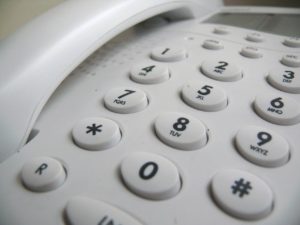Fraud Artists Use Multiple Methods
Judging by our telephone’s caller ID, I recently tried to call myself nine or 10 times in one day. Once an hour through most of the workday, and a time or two after I quit for the evening.
At least, that was my number appearing on the readout. Since most of the time, I was working on my laptop, I knew I wasn’t calling myself.
It had been several years since I had seen this spoofing trick: a scammer calling but the recipient’s phone number showing up on caller ID.
It worked once, but only because of my curiosity. As soon as the automated spiel started, I hung up.
It happened a few more times, but naturally I never answered.
When such calls ceased, I assumed the electronic scammers had turned to other tricks.
Familiar Story

“I wonder why?” I asked my wife. “Did some huckster put our number on auto-dial? Or is a bunch of different people using the same ploy?”
Ironically, the day after these phony calls, a friend forwarded a message on Facebook, a link to an NBC story about fraud artists using spoof calling to con folks out of their money.
She added a comment that she was glad someone was bringing this problem to light.
Remembering having seen a similar story in the past, I assumed there had been an update.
When I checked, it turned out the link was to the story I had seen when it aired in December of 2017. Which proves this problem has been around for a long time.
Amusing Messages
Sometimes the phony calls get a bit amusing. A few days after the multiple calls imitating our home number, I got several calls from a number in Homestead, Florida.
Each time, the caller left a message. Each time, the beginning of the message was cut off, so all I heard was: “465-6207, I repeat: 786-465-6207.”
Since I had no idea why I should call that number, I never did.
Of course, that message wasn’t nearly as amusing the one that soon followed. The message consisted of: “Good-bye.”
“What?” I thought. “You never said hello.”
Then there was message from another would-be con artist.
The man sounded thoroughly unprofessional, as if he were having trouble reading his script.
If Publishers Clearing House had really hired an operator this bad, it would be out of business.
Since the message was garbled, I couldn’t be sure if he said I had won three million dollars or ten million in the familiar PCH sweepstakes.
Interesting, since I hadn’t entered the contest for three years. And when I did, it was only because it included an offer to extend my Time subscription at a low rate.
Needless to say, I didn’t call back.
Proliferation of Fraud

As we chatted, he mentioned recently receiving what appeared to be a legitimate check for four dollars from the IRS.
After depositing it in his savings account, his brother told him some hucksters had printed up checks like the one he got.
These were mailed with authentic-looking letters to unsuspecting recipients as a way of gaining access to the recipients’ bank accounts when the checks were cashed.
My friend warned me to never take such a check to the bank, unless it was to their fraud investigators.
Never before in my lifetime has the old adage applied: If it sounds too good to be true, it is. We live in the new Wild West, where a legion of thieves is out to grab your money. Beware.



One Response
I”m afraid we get those calls, too. I”d never heard about the $4.00 check form the IRS. I guess there will always be people who will try to think of anything to avoid a real job!!!
Comments are closed.